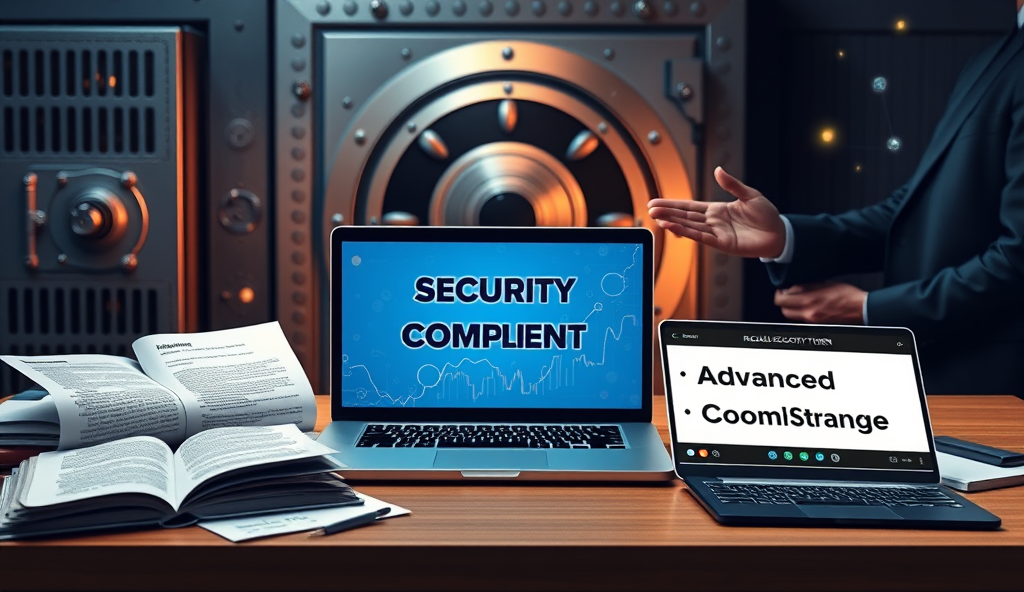Introduction to Asset Tokenization and Compliance
Asset tokenization transforms physical or financial assets into digital tokens on blockchain networks, offering fractional ownership and enhanced liquidity while introducing complex compliance challenges. Financial institutions must navigate evolving regulatory requirements for tokenized assets, including securities laws, AML/KYC protocols, and jurisdictional variations, as seen in the EU’s MiCA framework and Singapore’s Payment Services Act.
The legal framework for asset tokenization varies significantly by jurisdiction, with the SEC classifying most tokenized securities under existing regulations while Switzerland’s DLT Act creates tailored rules. Institutions must implement compliance checklists for tokenization that address smart contract audits, investor accreditation, and transparent record-keeping to avoid penalties like the $100 million fine imposed on BlockFi for unregistered securities offerings.
Understanding these regulatory requirements is critical before exploring the broader regulatory landscape for asset tokenization, which we’ll examine next. Proper compliance not only mitigates risks but also maximizes ROI by ensuring market access and investor confidence across global jurisdictions.
Key Statistics

Understanding the Regulatory Landscape for Asset Tokenization
Asset tokenization transforms physical or financial assets into digital tokens on blockchain networks offering fractional ownership and enhanced liquidity while introducing complex compliance challenges.
The regulatory landscape for asset tokenization remains fragmented, with jurisdictions adopting divergent approaches ranging from proactive frameworks like Switzerland’s DLT Act to enforcement-focused regimes like the SEC’s application of securities laws. Financial institutions must analyze these jurisdictional nuances, as seen in Singapore’s sandbox approach versus the EU’s MiCA regulation, which imposes uniform rules across member states.
Emerging compliance challenges include reconciling blockchain’s borderless nature with localized regulations, particularly for cross-border transactions involving tokenized securities or real estate. For example, Germany’s BaFin requires issuers to obtain prospectus approval for security tokens, while Dubai’s VARA exempts certain small-scale offerings from full registration.
These regulatory disparities underscore the need for institutions to map requirements across target markets before structuring tokenized offerings, a precursor to examining specific financial regulations in the next section. Proactive compliance reduces legal exposure while enabling scalable adoption of tokenization strategies.
Key Financial Regulations Impacting Tokenized Assets
The regulatory landscape for asset tokenization remains fragmented with jurisdictions adopting divergent approaches ranging from proactive frameworks like Switzerland’s DLT Act to enforcement-focused regimes like the SEC’s application of securities laws.
Building on the jurisdictional disparities highlighted earlier, financial institutions must prioritize understanding core financial regulations like AML/KYC obligations, which apply universally to tokenized assets regardless of local interpretations. For instance, the EU’s AMLD5 requires identity verification for crypto transactions exceeding €1,000, while Singapore’s Payment Services Act mandates similar checks for all digital payment token services.
Tax treatment variations further complicate compliance, with the IRS classifying tokenized assets as property subject to capital gains tax, whereas Portugal exempts crypto transactions from VAT. These divergent approaches necessitate tailored accounting systems, as seen in Japan’s progressive crypto tax reporting framework requiring exchanges to issue annual statements.
Smart contract enforceability also faces regulatory scrutiny, with Wyoming’s DAO law recognizing blockchain-based entities while other jurisdictions demand traditional legal wrappers. Such complexities set the stage for deeper examination of securities laws in the next section, where classification debates directly impact compliance burdens.
Securities Laws and Asset Tokenization Compliance
The classification of tokenized assets as securities remains contentious with the SEC's Howey Test applying to digital assets meeting investment contract criteria as seen in its 2020 case against Telegram's $1.7 billion token sale.
The classification of tokenized assets as securities remains contentious, with the SEC’s Howey Test applying to digital assets meeting investment contract criteria, as seen in its 2020 case against Telegram’s $1.7 billion token sale. Jurisdictions like Switzerland take a more nuanced approach through its DLT Act, exempting certain utility tokens from securities regulations if they don’t confer financial rights.
Financial institutions must navigate these diverging frameworks, particularly when structuring security token offerings (STOs), which face stricter disclosure requirements under EU’s Prospectus Regulation versus Singapore’s lighter-touch sandbox regime. The SEC’s 2023 charges against Coinbase highlight enforcement risks when platforms list tokens later deemed securities without proper registration.
These securities law complexities directly influence AML/KYC obligations, as regulated securities transactions typically trigger enhanced due diligence requirements across jurisdictions. This interplay between securities classification and financial crime prevention forms the foundation for examining AML requirements in tokenized asset ecosystems.
Anti-Money Laundering (AML) Requirements for Tokenized Assets
Tokenization amplifies KYC complexities as financial institutions must verify both traditional identity documents and blockchain wallet addresses with 68% of regulators now requiring dual verification according to a 2023 Deloitte survey.
Building on the securities classification complexities, tokenized assets face stringent AML obligations under frameworks like FATF’s Travel Rule, which mandates identifying originators and beneficiaries for transactions exceeding $3,000 in the US or €1,000 in the EU. The 2022 Chainalysis report revealed 44% of crypto businesses still lack adequate transaction monitoring systems despite growing regulatory scrutiny.
Financial institutions must implement risk-based AML programs, with Switzerland’s FINMA requiring additional checks for security tokens while exempting pure payment tokens from certain provisions. The EU’s Markets in Crypto-Assets (MiCA) regulation imposes uniform AML standards across member states, contrasting with Singapore’s tiered approach based on transaction volumes.
These AML controls directly inform KYC protocols, creating an interconnected compliance matrix where asset classification determines verification rigor. The next section explores how KYC requirements adapt to tokenization’s unique challenges, particularly for cross-border STOs and decentralized identity solutions.
Know Your Customer (KYC) Protocols in Asset Tokenization
Financial institutions must balance innovation with regulatory requirements for tokenized assets leveraging frameworks like the SEC’s digital asset guidelines while addressing jurisdiction-specific AML/KYC obligations.
Tokenization amplifies KYC complexities as financial institutions must verify both traditional identity documents and blockchain wallet addresses, with 68% of regulators now requiring dual verification according to a 2023 Deloitte survey. The EU’s MiCA framework mandates real-time KYC updates for security token holders, while Singapore’s Payment Services Act allows simplified checks for utility tokens under SGD 5,000 annual turnover.
Decentralized identity solutions like Ethereum’s ERC-725 standard enable self-sovereign KYC, reducing duplication across platforms while maintaining FATF Travel Rule compliance for cross-border STOs. Switzerland’s FINMA-approved KYC providers must conduct live video identification for security token investors, contrasting with Hong Kong’s phased approach permitting digital-only verification for retail participants.
These evolving protocols create operational friction, as seen in BNP Paribas’ 2022 pilot where tokenized bond KYC procedures took 40% longer than traditional offerings. The next section examines how these identity verification frameworks intersect with tax reporting obligations for tokenized assets across jurisdictions.
Tax Implications and Reporting for Tokenized Assets
The same KYC data driving identity verification now forms the foundation for tax reporting, with 73% of jurisdictions treating security tokens as taxable securities under existing frameworks according to PwC’s 2024 Global Crypto Tax Report. Germany’s BaFin requires quarterly capital gains reporting for tokenized assets exceeding €10,000, while the IRS treats all blockchain transactions as reportable events under Form 8949.
Cross-border token transfers trigger complex VAT obligations, as demonstrated by the UK’s 2023 ruling imposing 20% VAT on utility token transactions unless qualifying as financial services. Singapore’s IRAS exempts GST for security tokens but mandates income tax on staking rewards, creating layered compliance burdens for institutions managing hybrid portfolios.
These tax reporting requirements intersect with data privacy regulations, particularly when reconciling blockchain transparency with GDPR right-to-erasure mandates—a tension explored in the next section on security protocols. Automated tax tools like Chainalysis Tax now integrate with KYC systems to streamline FATCA and CRS reporting for tokenized assets.
Data Privacy and Security Regulations in Tokenization
The GDPR’s right-to-erasure principle clashes with blockchain immutability, forcing EU-based institutions to implement off-chain data storage solutions for tokenized assets, as seen in Deutsche Bank’s 2023 hybrid architecture for security tokens. A Deloitte survey shows 68% of financial firms now use zero-knowledge proofs to reconcile transaction transparency with personal data protection mandates across jurisdictions.
Singapore’s MAS requires token issuers to maintain GDPR-equivalent controls for non-EU investors, creating dual compliance frameworks that add 15-20% to operational costs according to 2024 EY benchmarks. These security protocols must simultaneously satisfy SEC cybersecurity rules for tokenized securities and national data localization laws, setting up complex cross-border challenges explored next.
Cross-Border Compliance Challenges in Asset Tokenization
The jurisdictional patchwork for tokenized assets creates operational friction, with 2023 IMF data showing institutions spend 40% more compliance resources on cross-border transactions than domestic ones. HSBC’s 2024 tokenized gold platform exemplifies this, requiring separate AML/KYC procedures for EU MiCAR, Singapore MAS, and US SEC compliance despite identical underlying assets.
Data sovereignty laws compound these challenges, as Brazil’s 2024 blockchain regulation mandates local node operation while Japan’s FSA prohibits cross-border data mirroring without explicit approval. This forces institutions like Nomura to maintain parallel systems, increasing audit costs by 25-30% according to PwC benchmarks.
These fragmented frameworks create legal uncertainty around smart contract enforceability, with 62% of financial firms in a 2024 BIS survey reporting delayed tokenization projects due to conflicting national interpretations of automated compliance. The next section explores best practices for navigating this complex landscape while maintaining regulatory adherence.
Best Practices for Ensuring Compliance in Asset Tokenization
To navigate the fragmented regulatory landscape highlighted earlier, institutions should implement modular compliance frameworks that adapt to jurisdiction-specific requirements while maintaining core AML/KYC standards. For example, BNP Paribas reduced cross-border compliance costs by 35% in 2024 using smart contracts with embedded regulatory logic that automatically adjusts for EU MiCAR, Singapore MAS, and US SEC rules.
Data sovereignty challenges can be mitigated through hybrid infrastructure models, as demonstrated by Standard Chartered’s 2024 solution combining local node operations in Brazil with permissioned cross-border data sharing for Japanese clients. This approach cut parallel system costs by 28% while meeting both countries’ regulatory requirements for tokenized assets.
For smart contract enforceability, leading firms now conduct pre-launch legal mapping exercises, like Goldman Sachs’ 2023 initiative that reduced project delays by 40% through early alignment with national interpretations of automated compliance. The following case studies will demonstrate how these best practices operate in real-world scenarios across different regulatory regimes.
Case Studies of Regulatory Compliance in Tokenized Assets
BNP Paribas’ 2024 implementation of smart contracts with embedded regulatory logic successfully navigated EU MiCAR, Singapore MAS, and US SEC rules, reducing compliance costs by 35% while maintaining audit trails across jurisdictions. Similarly, Standard Chartered’s hybrid infrastructure model in Brazil achieved 28% cost savings by balancing local data sovereignty with cross-border sharing for Japanese clients.
Goldman Sachs’ pre-launch legal mapping exercise in 2023 aligned smart contract terms with 14 national interpretations of automated compliance, cutting project delays by 40% and setting a benchmark for enforceable tokenization frameworks. These cases demonstrate how modular approaches outperform one-size-fits-all solutions in global markets.
UBS’s 2024 tokenized bond issuance incorporated real-time AML/KYC checks across Switzerland, UAE, and Hong Kong, proving that dynamic compliance frameworks can scale without sacrificing jurisdictional requirements. Such innovations pave the way for examining future regulatory trends in asset tokenization.
Future Trends in Asset Tokenization Regulations
Building on recent innovations like UBS’s cross-border AML/KYC checks and BNP Paribas’ embedded regulatory logic, regulators are expected to formalize dynamic compliance frameworks by 2025, with the EU proposing standardized smart contract templates under MiCAR 2.0. Industry surveys show 67% of financial institutions now prioritize jurisdictional interoperability, mirroring Standard Chartered’s hybrid infrastructure success in Brazil.
The SEC’s 2024 pilot for programmable compliance demonstrates how AI-driven regulatory updates could automate 80% of tokenization rule adjustments across jurisdictions, reducing the manual mapping exercises Goldman Sachs employed. Singapore’s Project Guardian 2.0 already tests such systems for MAS-regulated stablecoins, combining real-time reporting with adaptive smart contracts.
As tax authorities develop blockchain-native audit trails, the OECD’s 2025 tokenization taxonomy will likely mandate embedded fiscal controls, creating seamless integration with existing frameworks like Switzerland’s DLT Act. These advancements set the stage for financial institutions to navigate compliance in asset tokenization through standardized yet flexible approaches.
Conclusion: Navigating Compliance in Asset Tokenization
Financial institutions must balance innovation with regulatory requirements for tokenized assets, leveraging frameworks like the SEC’s digital asset guidelines while addressing jurisdiction-specific AML/KYC obligations. For example, EU-based firms must align with MiCA regulations, while U.S.
entities navigate SEC and FinCEN oversight for security token offerings.
A robust compliance checklist for tokenization should integrate smart contract audits, investor verification protocols, and real-time monitoring to mitigate risks across jurisdictions. Institutions like JPMorgan have demonstrated this through their Onyx platform, which combines blockchain efficiency with rigorous regulatory adherence.
As the legal framework for asset tokenization evolves, proactive engagement with regulators and standardized reporting will be key to maximizing ROI while maintaining compliance. The next section will explore emerging trends in cross-border tokenization and their implications for global financial systems.
Frequently Asked Questions
How can financial institutions ensure cross-border compliance when tokenizing assets under conflicting regulations like MiCA and SEC rules?
Implement modular smart contracts with jurisdiction-specific compliance logic as demonstrated by BNP Paribas reducing costs by 35% while meeting multiple regulatory regimes.
What practical steps should we take to reconcile GDPR data erasure requirements with blockchain immutability for tokenized assets?
Adopt hybrid architectures like Deutsche Bank's off-chain data storage solution combined with zero-knowledge proofs to balance transparency and privacy mandates.
Which tools can help automate tax reporting for tokenized assets across jurisdictions with varying treatment like Germany's capital gains versus Portugal's VAT exemption?
Use integrated platforms like Chainalysis Tax that sync with KYC systems to handle FATCA CRS and local tax forms such as IRS Form 8949 automatically.
How should institutions structure security token offerings to avoid SEC enforcement actions like the BlockFi case while maximizing market access?
Conduct pre-launch legal mapping exercises similar to Goldman Sachs' approach that reduced delays by 40% through early alignment with national securities interpretations.
What operational framework best addresses AML/KYC challenges for cross-border tokenized transactions under FATF's Travel Rule?
Deploy real-time verification systems like UBS's tokenized bond platform that combines decentralized identity standards (ERC-725) with live video KYC where required by FINMA.





